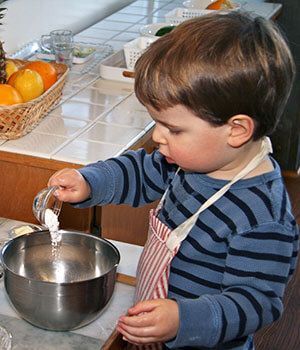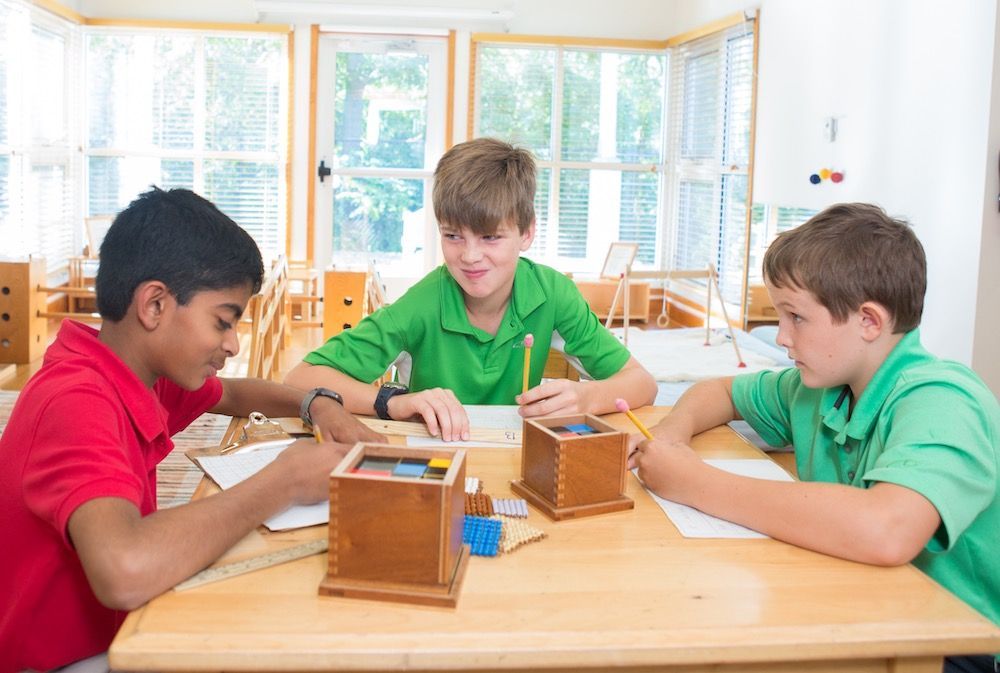
Creating Space for Children
No matter the ages of our children, we ultimately cannot control what they do. This is one of the biggest challenges for all parents. We care about our children—their behavior, their appearance, their successes and shortcomings. We want them to be happy and to thrive, to live lives of service to the world, and to be good people. The misconception that we can control these outcomes enters our psyche the moment our children are born, and it must be one of the hardest realities to accept along our bumpy parenting journeys. The Montessori approach reminds us that, rather than trying to control children, we must put our energies into creating space for children: preparing the environment, modeling behavior within it, providing uninterrupted time, and giving our children freedom to make choices. When we do this, we develop healthier relationships with our children and we set the stage for them to have healthier relationships with others. Ironically, this is also the best way to ensure that they succeed and live happy, productive lives.

By 'creating space for children' I don't just mean a physical space, but a temporal space as well. This space must have clear physical boundaries, such as the walls of a bedroom or the fence in the yard, and also temporal space, with a beginning time and ending time. Within these boundaries, a child must be free to act—this is crucial for his development. Montessori said, “It is not enough to give the best living conditions, freedom must also be given, so that human beings placed in the most favorable conditions of existence should be left free to develop themselves.” (Rome 1913 Lectures)
Ways of Creating Space for Children
So, let’s look at an example of creating space for children with boundaries and allowing freedom for choices within it. If we are talking about very young children, one of the important spaces in the day is the nap time, or what I prefer to call “quiet time.” Some children are not regular nappers. No matter what you do as a parent, certain children will not lie down during the day and fall asleep! I had a child like this, and I can relate to the exasperation, as I tried every suggestion and experiment. I could not control whether or not our son fell asleep. But with a background in Montessori philosophy, I did realize that I could try creating a space in which my child could choose to sleep. I put him in his room at the same time every afternoon for quiet time, read him a story and lay on his bed with him, creating a restful scene, and then left him in there until an hour later.
That hour became a precious time for me as a mother to be alone and rest, read a book, or write in my journal. It was restorative time. Often, I would hear our son cheerily talking to himself in there, playing or looking at books. Sometimes he actually did fall asleep. But even though he often didn’t, we all emerged after the hour feeling somewhat rested. This routine of having a quiet time became the norm in our family. Even now, our family tends to follow this daily pattern of reading or doing something quiet in the early afternoons.

This idea of creating space for children and allowing freedom within it can be transferred to situations with older children, as well. For instance, you can designate a certain time in the evening for your adolescent to do his homework. You may not be able to control how your child does his homework or even whether he does, but you can create the space and call it study time. Study time might be from 7:30 to 9:00 every weeknight, in your kitchen or home library, and your child can choose to do homework, read a book, or write something. (Be specific that this time is not for email, texting, talking on the phone, watching a movie, or playing video games). This works best if you as a parent also sit down with a book or some work and model that, even as adults, we study or have a reflection time in the evenings. It can help to designate a physical space for your child within the home to do this. It becomes easier to set boundaries within a designated space.
With both of these examples, you focus on creating space for children—the clocked time, the location, and the conditions, but your child is then free to make certain choices within it. Your young child may not choose to sleep, your adolescent may not choose to actually do his homework, but you provide a consistent opportunity.

It is important to resist commenting or getting involved. Don’t try to control. Every child needs to build himself as a decision-making, autonomous person. A "self" must be established before cooperating and collaborating with others. If you can be respectful of your children’s choices within the boundaries you provide, they will learn to self-correct and succeed by their own efforts. The conditions of life itself and the natural consequences of the environment give your children all the information they require to adjust their behavior.
The next step is to model with your own behavior. If you rustle around the house cleaning dishes, doing laundry, and talking on the phone during quiet time your child may feel he is trapped in his room because he can hear you out there, doing something he thinks he’d like to be doing, too! The space you created might not do its job in this case. Likewise, if you watch a sitcom or rustle around the house preparing for the next day during study time, your adolescent might not make good use of the space you created for him. Instead, do your own quiet activity during your child’s quiet time, or do some of your own reading or reflective work during study time. Modeling behavior that mirrors the best choices for your children is an important ingredient in creating an effective space.
We have a tendency to want to control our children’s outcomes because we care so much about them. But the amazing thing is that when we focus our energies on creating space for children, and allowing our children to make their choices and build themselves through their own efforts, and by modeling for them, our children become invested in their own successes. Montessori saw that this is, truly, the most helpful approach. Look for times and places in the routines of your family’s day where your children may need you to create the space for them to succeed. It is the most effective way to support them, and you will all be happy to leave the controlling behind.


